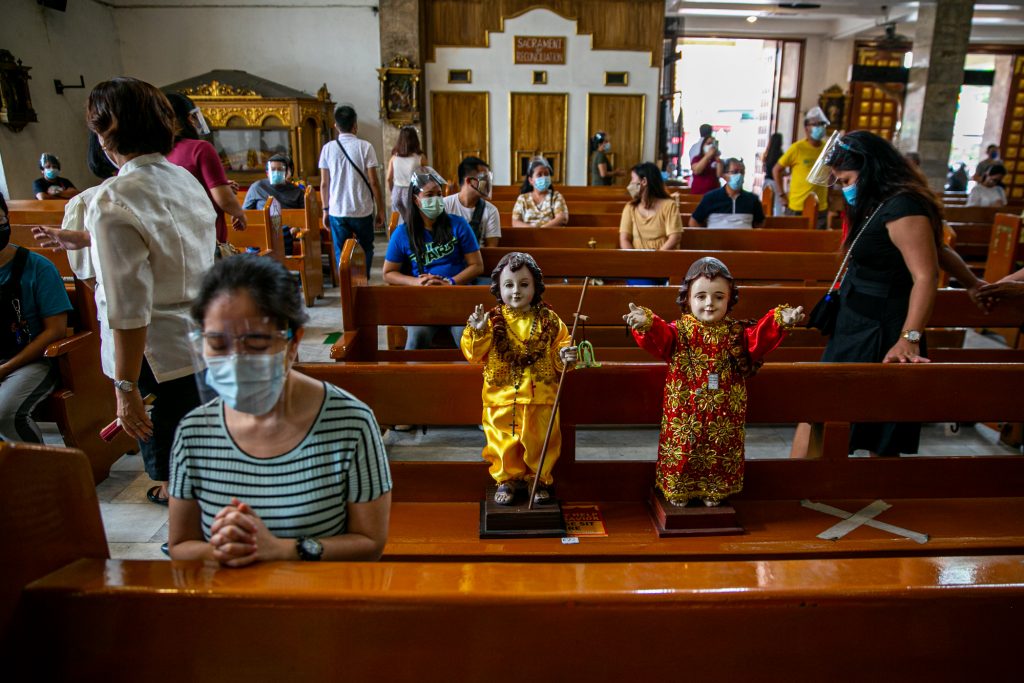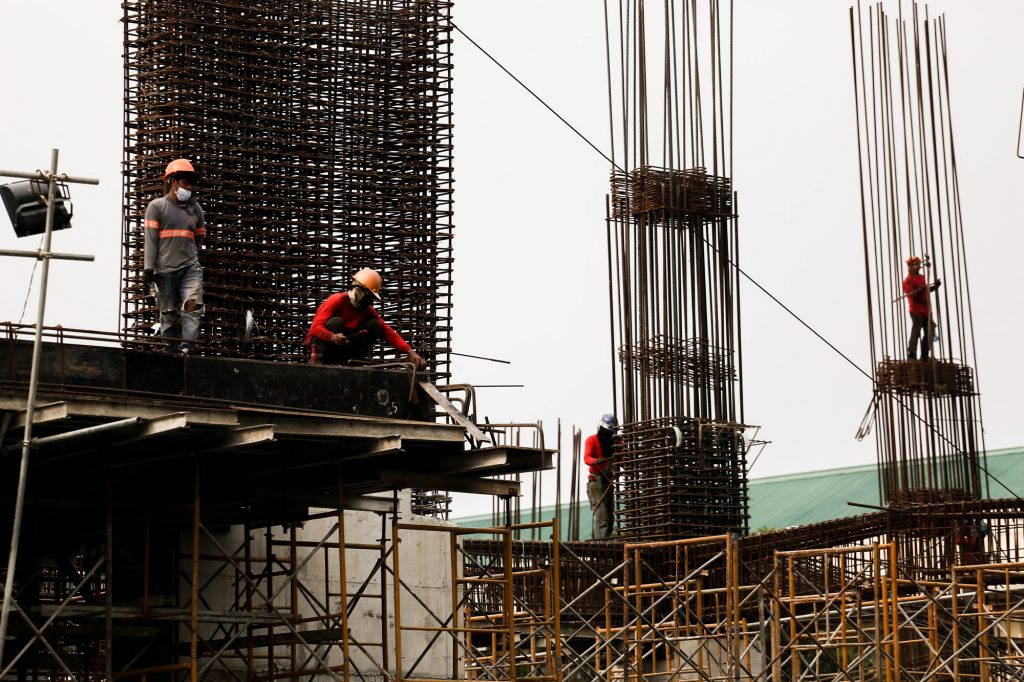
A miniature image of the Santo Niño (Holy Child Jesus) wearing green clothes with gold trimmings stood on top of a basket full of rice cakes in a street corner in the Philippine capital.
A woman touched the image and made the sign of the cross before leaving with a bag of rice cakes.
Devotees of the Santo Niño believe that a green-clad image of the Child Jesus brings good luck and success to life.
Benjamin Santos, however, said the Child Jesus “gives inspiration and the will to move forward” regardless of the color or design of its clothes.
Santos has been selling rice cakes for years now outside the Diocesan Shrine of the Santo Niño in the Philippine capital’s Quezon City.
“I learned how to make these delicacies from my father who learned it from my grandfather,” said the 59-year-old vendor. “I am a third-generation rice cake vendor,” he said.
Santos lives in Rizal province, about 40 kilometers from the shrine in the Diocese of Cubao. He could have chosen a nearer church but he prefers to be near the shrine because of the Santo Niño.
“Aside from the many churchgoers and devotees here, which means potential customers, I like visiting the image,” he said.
His weekly routine to the church was, however, stopped due to the pandemic.
“This is the first time I came back since the lockdown,” he said. “For almost a year, my wife and I were jobless,” he said.
Santos is one of the estimated 10.9 million Filipino workers who lost their jobs and had lower incomes and working hours due to the pandemic.
The figure was way higher than the “official unemployment data” from the Philippine government that reported about 3.8 million jobless Filipinos as of October 2020.
The report said “high-risk sectors” with most displacements included manufacturing, transportation, accommodation, and food service activities.

In the Asia-Pacific region, about 81 million jobs were lost in 2020, bringing the unemployment rate in the region to as high as 5.7 percent.
The impacts of the pandemic on the economy have led to a higher number of 98 million “working poor,” or those people who are living on less than US$1.90 per day.
Santos’ income suffered a significant drop because of the pandemic. “I have a child who works in a call center. He was our only breadwinner,” he said.
The rice cake vendor said he prays to the Santo Niño to give him “a long healthy life” and the “strength to work” for his family especially during the pandemic.
He thought the Child Jesus “abandoned” him when he and his other children lost their jobs, until he realized that the Santo Niño might have actually “answered my prayers.”
“He didn’t give me or my eldest child a new job, but He gave us a selfless and loving child who was able to support the whole family,” he said.
Bishop Honesto Ongtioco of Cubao said the “feast” of the Santo Niño that is observed by Filipinos every January is a “reminder that God is not afar to His people during this time of a pandemic.”
He said the image of the Child Jesus “has been accompanying us all this time for us to emerge from this pandemic a better person.”
“Many people have lost their jobs and many more will suffer because of the new strain of the coronavirus, but we must always trust that He will not abandon us,” said the prelate.
He urged the faithful to “seek the Lord’s helping hand” and “come close to Him because we trust in Him.”
“We have physical distancing during religious feasts but we do not distance ourselves from God,” he said.

Bishop Ongtioco said the message of the “feast” is to stand up despite the challenges, and like the Child Jesus, “put our trust to our parents.”
The “feast” of the Santo Niño is one of the biggest and oldest Catholic celebrations in the country.
Jayeel Serrano Cornelio, director of the Development Studies Program at the Ateneo de Manila University, said the devotion is one of the many expressions of Filipino piety.
He said the image of the Santo Niño is very popular in the country because “people see it as very much part of their everyday lives.”
“Religiosity for many Filipinos is very sacramental, it is very tactile,” said Cornelio. “God has to be touched …. It is a deep expression of affection for God,” he said.
The devotion to the Child Jesus started in 1565 when Spanish soldiers found the image under a pile of ashes in the central Philippine province of Cebu.
It was later discovered that the image was a gift of Portuguese explorer Ferdinand Magellan, head of the first Spanish expedition in 1521, to the queen of the island when she was baptized a Christian.
Source: Licas Philippines
0 Comments